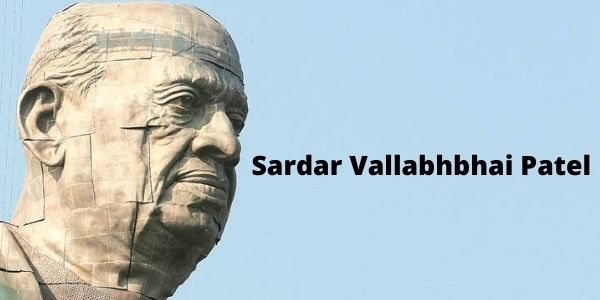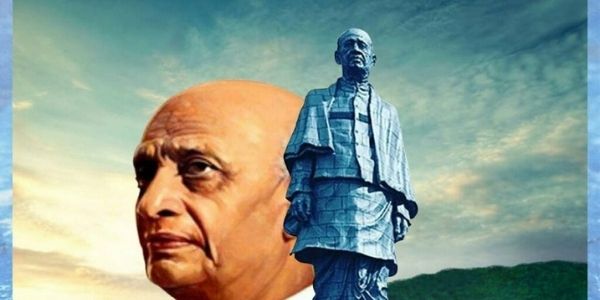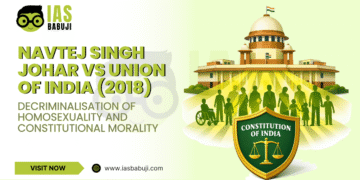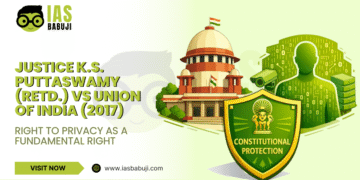We all know about the IAS exam and the syllabus of the exam. Further, many students wish to become the next IAS officer. With the right direction and hard work, one can take the IAS exam. Therefore, to help you with the same, we have added details of Sardar Vallabhbhai Patel, who was the first home prime minister of India. It is essential to understand the Sardar Vallabhbhai Patel statue, Jayanti, why he is called the iron man of India, and all the other important information on the exam. One must understand all information as a part of the IAS exam.

However, the journey of becoming an IAS officer is not an easy one. Your journey is full of hard work and special efforts. The competition is very high if you want to shine you have the only choice of working hard. One must use their available time and put their energy into the right place. Further, this exam will also check your dedication towards your goals.
Introduction
To begin with, in the article, we will be talking about Sardar Vallabhbhai Patel. He was the first deputy Prime Minister of India from 1947 to 1950. Further, he was a barrister and a senior leader of the Indian National Congress. He played a leading role in the country’s struggle for independence, guiding its integration into a united, independent nation.

| Monarch | George VI |
|---|---|
| President | Rajendra Prasad |
| Governor-General | Louis Mountbatten Chakravarti Rajagopalachari |
| Prime Minister | Jawaharlal Nehru |
| Preceded by | Position established |
| Succeeded by | Morarji Desai |
Further, Sardar Vallabhbhai Patel is called the Iron man of India; because of his strong opinions for the unification of princely states into one nation, his positive outlook towards women empowerment, and his active role to build India into what it is today. Further, below is all information Sardar Vallabhbhai Patel Statue.
| Born | Vallabhbhai Jhaverbhai Patel 31 October 1875 Nadiad, Bombay Presidency, British India |
|---|---|
| Died | 15 December 1950 (aged 75) Bombay, Bombay State, India |
| Cause of death | Heart attack |
| Political party | Indian National Congress |
| Spouse(s) | Jhaverben Patel(m. 1891; died 1909) |
| Children | Maniben Patel Dahyabhai Patel |
| Alma mater | Middle Temple |
| Profession | Barrister Politician Activist Freedom Fighter |
| Awards | Bharat Ratna (1991) (posthumously) |
Sardar Vallabhbhai Patel
Further, his full name is Vallabhbhai Jhaverbhai Patel, by name Sardar Patel (Hindi: “Leader Patel”). On October 31, 1875, he was born in Nadiad, Gujarat, India—died December 15, 1950. Besides, during the first three years of Indian Independence after 1947, he served as deputy prime minister, minister of home affairs, minister of information, and minister of states.
Early Life
Further, talking about Sardar Vallabhbhai Patel’s childhood life, he was born into a self-sufficient landowning family of the Leva Patidar caste. Besides, he attended primary school at Karamasad and high school at Petlad. At the age of 16, enrolled at 22 and passed the district pleader’s exam. Further, in 1900 set up an independent office of district leader in Godhra, and two years later, he moved to Borsad. His family is from a farmer’s family. Further, he was considered unambitious, but he proved them wrong as he passed the law examination.
Besides, as a lawyer, he distinguished himself in presenting precisely and challenging police witnesses and British judges. Further, in the year 1908, he lost his wife. In 1910, he traveled to London in August to study at the Middle Temple. Later, he returned to India in February 1913 and settled in Ahmadabad.
Important Points for the IAS Exam
- In the first place, his father is haverbhai had been a soldier in the army and his mother name is Ladbai.
- Further, he moved to Ahmedabad as he wanted to give a comfortable life to his family. By then he was married and had two children.
- Later, he became an ardent follower of Gandhi and started involved himself in political work.
- Further, he became the secretary of the Gujarat wing of the Congress Party. Also, volunteered to lead the Kheda campaign against taxation of peasants
- The Kheda Campaign was a success and through a village-by-village tour. Patel and his associates refused pay taxes until the government met their demands. He also raised an army of volunteers who helped the villagers in this work
- In 1920, he elected as the president of the Gujarat Pradesh Congress Committee
- Further, he supported non-cooperation movement with Gandhi.
- He also led campaign called as the Bardoli Satyagraha in 1928. In this he asked farmers to refuse to pay taxes in the wake of floods and famines.
- He was arrested during the Dandi Salt March (1930). After his release following the Gandhi-Irwin Pact, he was elected the President of the INC.
- Besides, he supported the Quit India Movement. He inspired people by his emotioanl speech made on 7 August 1942.
- Later, he represented India on the Partition Council.
One can visit the official site to know more about the IAS exam and UPSC. Read More.
Role in the Indian Freedom Movement
We all know about the Indian Freedom Movement and freedom fighters. Further, Patel was not into active politics, and he used not believe in the principles of Mahatma Gandhi. Later, he joined the Congress and became the secretary of the Gujarat Sabha, which became a Congress stronghold. Further, he respected Gandhi’s call. He quit his hard-earned job and joined the movement to fight for the exemption of taxes in Kheda. Later, in 1920, he joined Gandhi’s Non-Cooperation Movement and traveled around West India to recruit 3,00,000 members. Besides, they collected more than Rs 1.5 million for the party fund.

Sardar Vallabhbhai Patel as Congress President
- After signing the Gandhi–Irwin Pact. He elected as president of Congress for its 1931 session (Karachi).
- Further, the Congress committed itself to the fundamental rights and civil liberties. Besides, he advocated for the establishment of a secular nation.
- Also he used his poaition as Congress president to organise the return of confiscated land to farmers in Gujarat.
As Social Reformer
Further, Patel served as the Social Reformer. He worked extensively against alcohol consumption, untouchability, caste discrimination, and women’s emancipation in Gujarat and outside.
As Deputy Prime Minister and Home Minister
Later, after Independence, Patel became India’s first Deputy Prime Minister. Further, on the first anniversary of Independence, Patel was appointed as the Home Minister of India. Besides, he was in charge of the States Department and the Information and Broadcasting Ministry. Further, as the first Home Minister and Deputy Prime Minister of India, Patel organized relief efforts for refugees fleeing from Punjab and Delhi.
Role in the Integration of the princely states
Further, Patel failing with his health and age, never lost sight of the larger purpose. Besides, as the first Home Minister and Deputy Prime Minister, he played a major role in integrating about 565 princely states into the Indian Union. He also worked tirelessly to build a consensus with the princely states but did not hesitate to employ Sama, Dama, Dand, and Bhed methods where necessary.

IAS exam and Useful Suggesstions
Now you have enough information to help you with the IAS exam preparations. As a part of the IAS exam main GS papers. When we talk about the IAS exam, many things are looked after. It can be with exam pattern, syllabus, books, exam procedure, admit card, and other details. One can click here to know more about the IAS exam and other related information. In exam three stages, the first stage Prelims paper, the second paper is Main paper, and last round is Interview round. One needs to clear them all to get selected as the IAS officer. There will be two papers in the prelims, and in the main papers, there are nine papers. In the prelims, questions are objective type, and the main paper questions are descriptive type.
Conclusion – Sardar Vallabhbhai Patel
In summary, in the article, we have added all details of Sardar Vallabhbhai Patel. Further, know about Sardar Vallabhbhai Patel Jayanti, statue, who is the first home minister of India, and know why he is called the iron man of India. Know all the efforts taken by Sardar Vallabhbhai Patel to improve the nation and how he supported all the Gandi thoughts in strengthening the country. These all are important to know for the IAS exam. Further, understand all the other important concepts for the UPSC exam. Click Here. Besides, it is important to keep a separate book to write all the essential points and study the same for the IAS exam. Later, one can go through the official site to get the latest updates on the exam.
FAQs – Sardar Vallabhbhai Patel
Vallabhbhai Patel’s birth anniversary is celebrated the National Unity Day
Patel’s commitment to country integration in the newly independent nation.
National Unity Day is celebrated in India on October 31
Editor’s Note | Sardar Vallabhbhai Patel
In brief, the article speaks about the Sardar Vallabhbhai Patel. Further, understand the Sardar Vallabhbhai Patel Jayanti, statue, and he is the first home minister of India. In addition, understand why he is called as the iron man of India. It will help you with the UPSC exam preparation as part of the IAS main exam. Later, you will find details of the IAS exam and other details related to the IAS exam. Besides, we have added the necessary links that will help you with the IAS exam. Try to follow some useful tips that will help you get the score in the IAS exam. All the best for the exams, do well.






